Last summer, my longed for first visit to the Pembrokeshire coast was ruinously curtailed. Two weeks before leaving, I slipped on the stairs in a spectacular fashion, gliding through the air to land in a crumpled heap. The result was a badly sprained ankle and a very cross demeanour. I hobbled about to only catch glimpses of the glorious coastal path, and on this visit I was determined to see what had just been out of reach.
I can’t remember when I last went on holiday without a well stuffed bag of art materials. Every trip has been geared towards drawing and bringing home a sketchbook full of scribblings to build upon. But this time, the weeks prior to going away had been very stressful and I was so frazzled that somehow the materials I threw into my bag didn’t fit together. There were glaring omissions: only one paint brush, no small sketch pad and no charcoal pencils or sticks, the mainstay of my sketching kit.
Ordinarily I would make do and make a virtue of using limited materials, but after a couple of attempts, I felt off kilter. Drawing near the coastal path on a sunny day, I was beleaguered by well meaning walkers, each wanting to see what I was doing and making copious comments. I felt unsettled, and so I decided to stop. I realised that a break from everything would do me no harm at all.
But not drawing didn’t stop me noticing. From the bedroom window each morning I could see a bank of grasses and wild flowers: hot pink valerian, campion and yolk yellow tutsan dancing with bees and hoverflies. I could hear sparrows and goldfinches sitting on the wires and a raucous magpie pestering some poor bird. Clusters of snails clung from the umbelliferous seadheads, seeming to enjoy the ride. And I just lay and watched. And it was lovely.
A meeting with a Welsh mountain pony on my walk to Carreg Coetan Arthur Chambered Tomb
(Listen to “Ramblings” below to follow in my footstaps.)
A linnet soars and sings on the coastal path
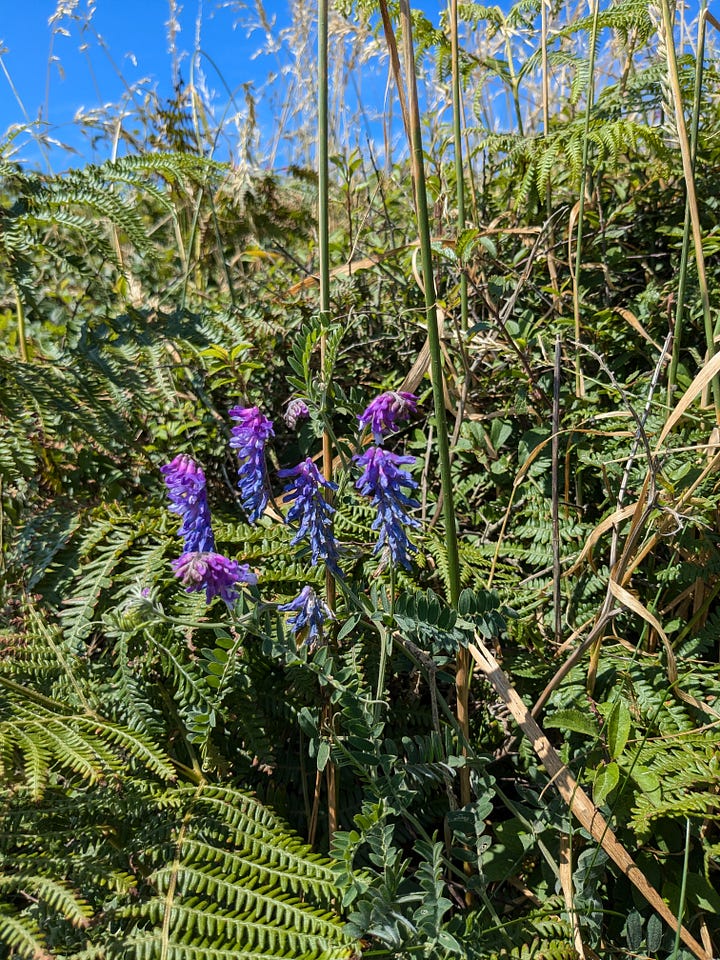
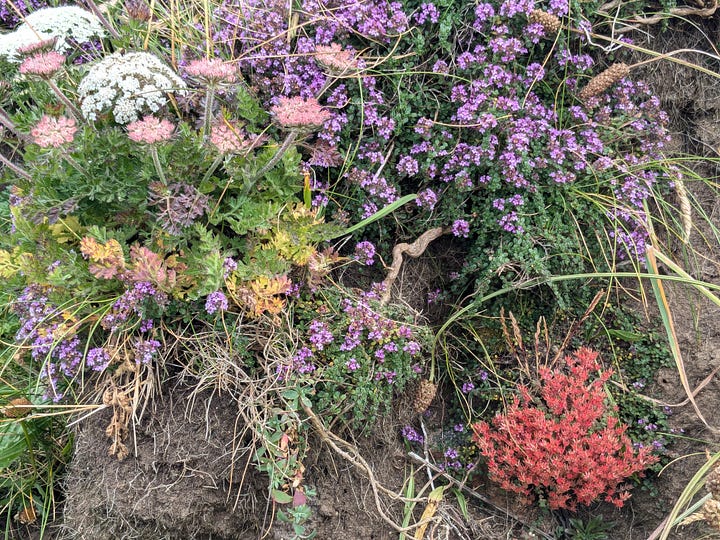
Tufted vetch, reflecting the blue sky and a tapestry of wild thyme, wild carrot and sedums nestled on the cliff path
Had I not been taking things at such a leisurely pace, I might have missed this, an exhilarating exhibition by the landscape artist, Maggie Brown at the Oriel y Parc, St David’s. Its focus is the hawthorn, a tree that is sculpted on the west coast by the salt laden wind, stretching its fingers to the sea. The project has been over a year in the making, but the trees chosen have been observed and recorded by the artist for many years. They are familiar friends, and it shows.
The mixed media paintings begin as drawings in the field, and her sketchbook spreads are displayed alongside the finished works, complete with nature notes and observations. These jottings act as an anchor while drawing in the landscape, later informing their titles and reigniting the experience of making them. But the magic occurs back in the studio where with bold, sweeping strokes, and washes of wintry colour, the trees grow again from the rocks.
A further innovation in this exhibition is that we able able to trace the paintings’ genesis not only in field sketches, but in a huge mood board which reveals the artist’s inspiration from preliminary, compositional drawings and bird sketches, to packaging, colour swatches, tourism leaflets, nature writing, ecoprints and even a beer can with the fitting slogan “embrace the opaque”, all of which combine to build a sense of the landscape and the nature that inhabits it. It is certainly an idea I will adopt as it cements all the influences together, that are so easily forgotten, and I am sure, will help maintain a focus on a project’s intention.
A section of Maggie Brown’s mood board for her exhibition
Among the paintings are the poems of Mike Sharpe and Bethan Rees Walton, both Pembrokeshire writers, whose words echo the thorn tree images, and there is even a small, living hawthorn that sits endorsing the event.
As an artist I learned so much from this work. I found the images both moving and inspiriting, but they also helped me see how you can bring together disparate influences to consolidate your own vision. It is rare these days that I see art other than online or in reproduction, but there is no substitute for seeing work in actual life to experience its subtleties, its textures and to feel the vigour and life that produced it. You notice details of mark making, juxtapositions of colour and materials. Being able to see these works in such close proximity was an especially invigorating example of why it matters.
The layers of marks and colour in Maggie Brown’s work
By displaying the paintings’ development, and by her willingness to share this trajectory, we as viewers, witness both the artist’s intense love of nature, but also invest in the importance of its subject. This work makes us appreciate not only the painting process, but what provoked that process: an affinity to her local landscape and the Pembrokeshire countryside. It shows us how art can help put forward a passionate plea for caring for our world, by showing us the beauty and spirit of our land.
Hawthorn Redwing by Maggie Brown, Mixed Media
I walk the lane, more slowly now, to reach the field,
where pasture rises gently to a tree-fringed sky.
It’s grazed today by sheep that always stare at me.
On most days, I am here to touch a rock of quartz
that is a gate-post now, a rusted bolt-head in its side.
In earlier times, it would have been free standing
somewhere on this hill and others may have come
to place their hands where mine is now,
drawn by the expectation of a quietness
that such a stone as old as Earth might give.
Mike Sharp
Thumbnail sketches of Maggie’s work in progress
Something to listen to
I have a feast of listening this week and the eight hour trip each way yielded some treasures.
I have long loved Clare Balding’s “Ramblings” on Radio 4 and I had been saving this episode for the onward journey to St David’s to soften the long drive. Here she walks with Jackie Morris, the renowned illustrator of “The Lost Words,” and the glass artist Tamsin Abbott who walk from Whitesands beach up across the coastal path that I followed in my walk.
A delight for the way home was this episode, The Golden Road, that follows a drover’s road through the Preseli Hills, in very inclement weather, that gives a taste of the remote beauty of the place. Listen out for the extraordinary tale of the Pembrokeshire Corgis!
I also fell across this radio adaptation of “The Children of the Stones”, which you may know from the disquieting and brilliant 1970’s TV series. This is an ingeniously updated version that uses the BBC sound department to unsettling effect. In ten 15 minute episodes, I soon gobbled this up.
Something to read
I read the The Long Field by Pamela Petro last year and it was a key reason I wanted to visit the neolithic dolmen, Pentre Ifans. A beautifully written memoir that explores the notion of hiraeth, it is a love letter to Wales. You can read a taste of it here and here.
Pentre Ifans in late afternoon
Something to watch
And just in case you haven’t read it, Alan Garner’s magnificent “The Owl Sevice”, also adapted for television in 1969, is set in Pembrokeshire and is a retelling of the myth of Blodeuwedd from the Mabinogion. The opening sequence is unforgettable as is that scratching. I may have to watch it again…
Thank you for your company this week on my trip to Pembrokeshire and for taking the time to read it. Your support here is greatly appreciated and I always look forward to your comments, so please do get in touch. If you liked this post, please press the “Heart” as it helps spread the word.
In two weeks, I shall be returning to the East Anglian flatlands and celebrating high summer with the artist Cedric Morris. I hope you will join me then.
You can see more of Maggie Brown’s work on Instagram. Her exhibition “Hawthorn” runs until the 4th August at Oriel y Parc, St David’s and entry is free. She is also opening her studio as part of the North Pembrokeshire Open Studios next month.




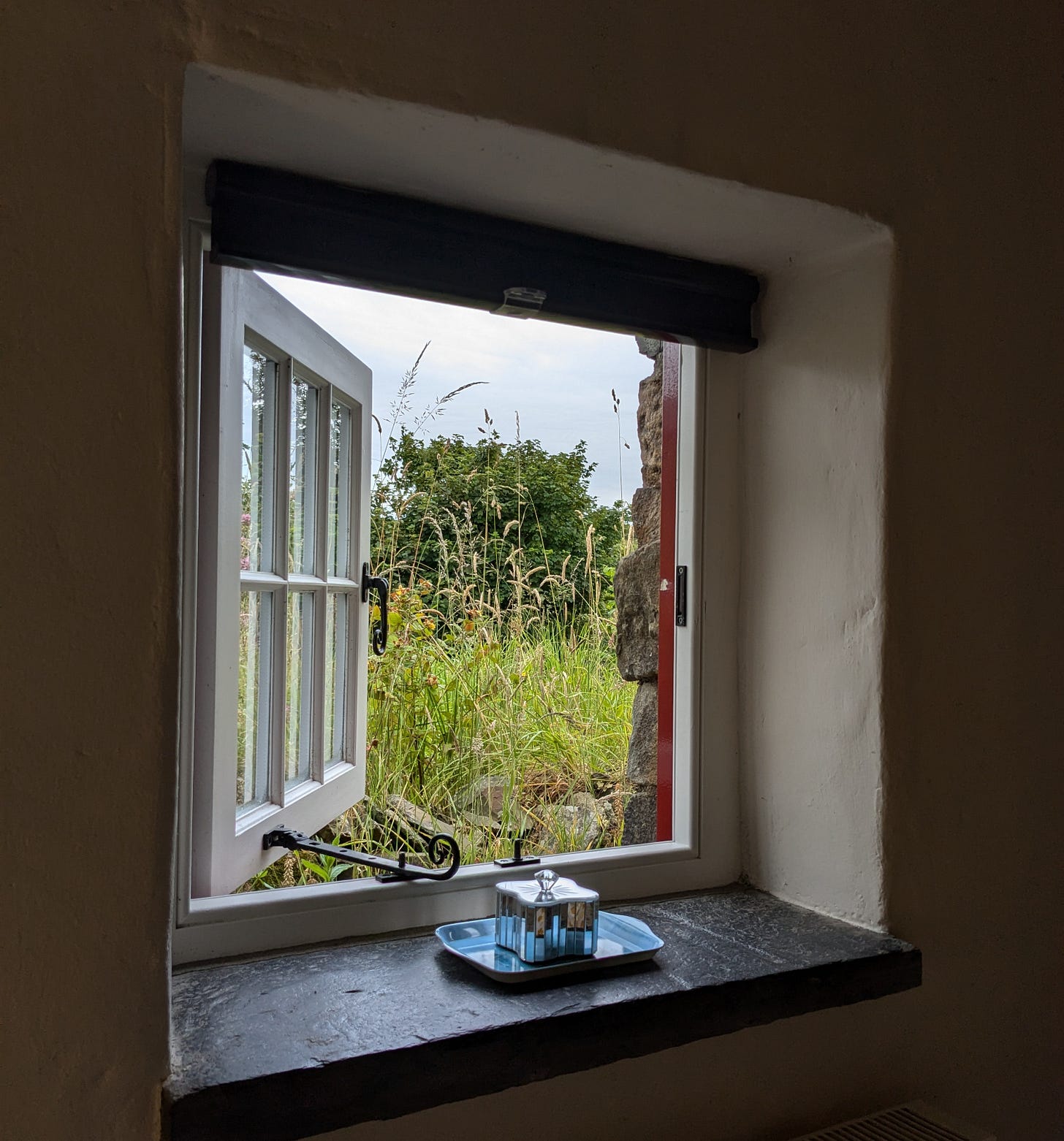

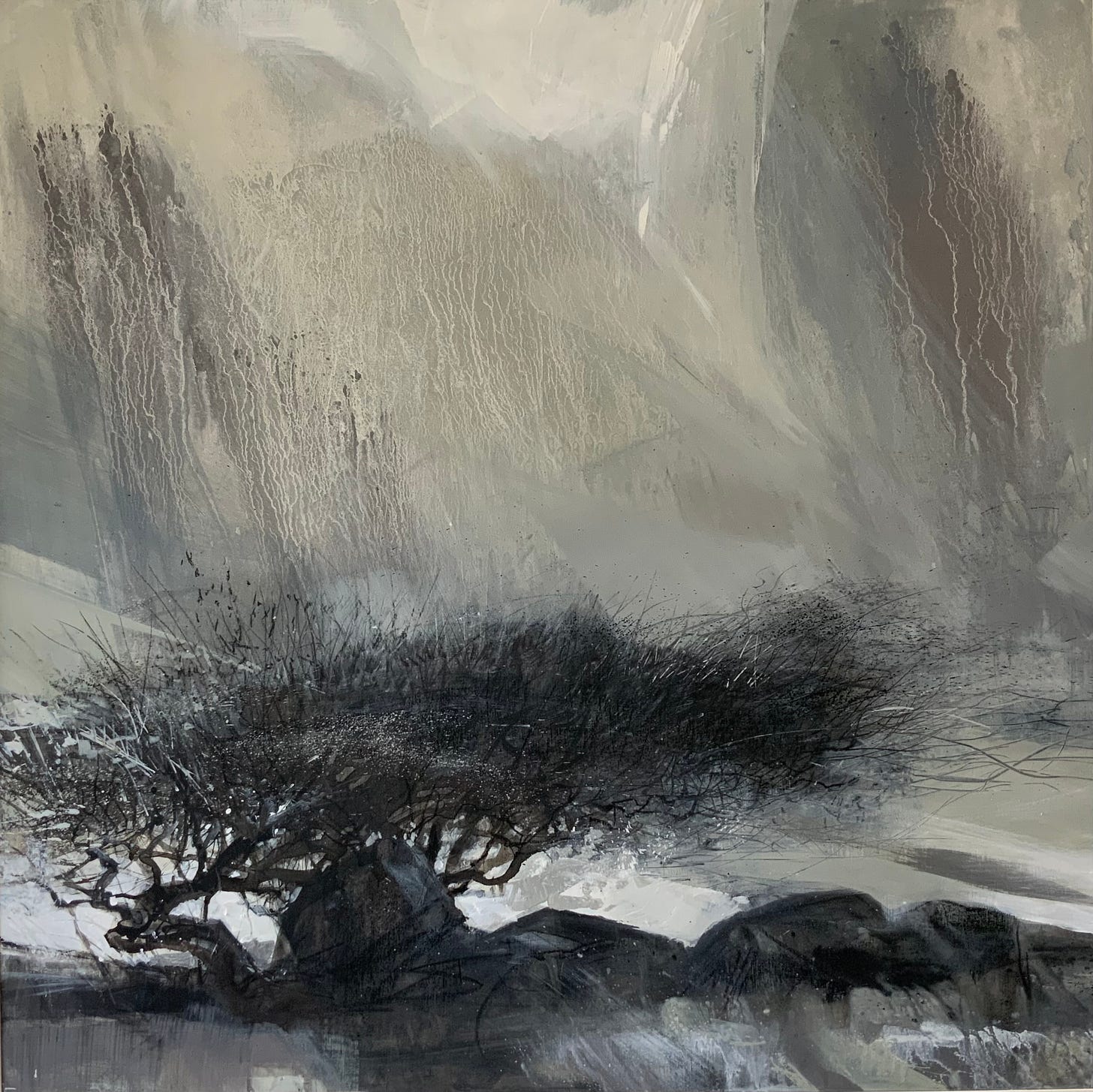

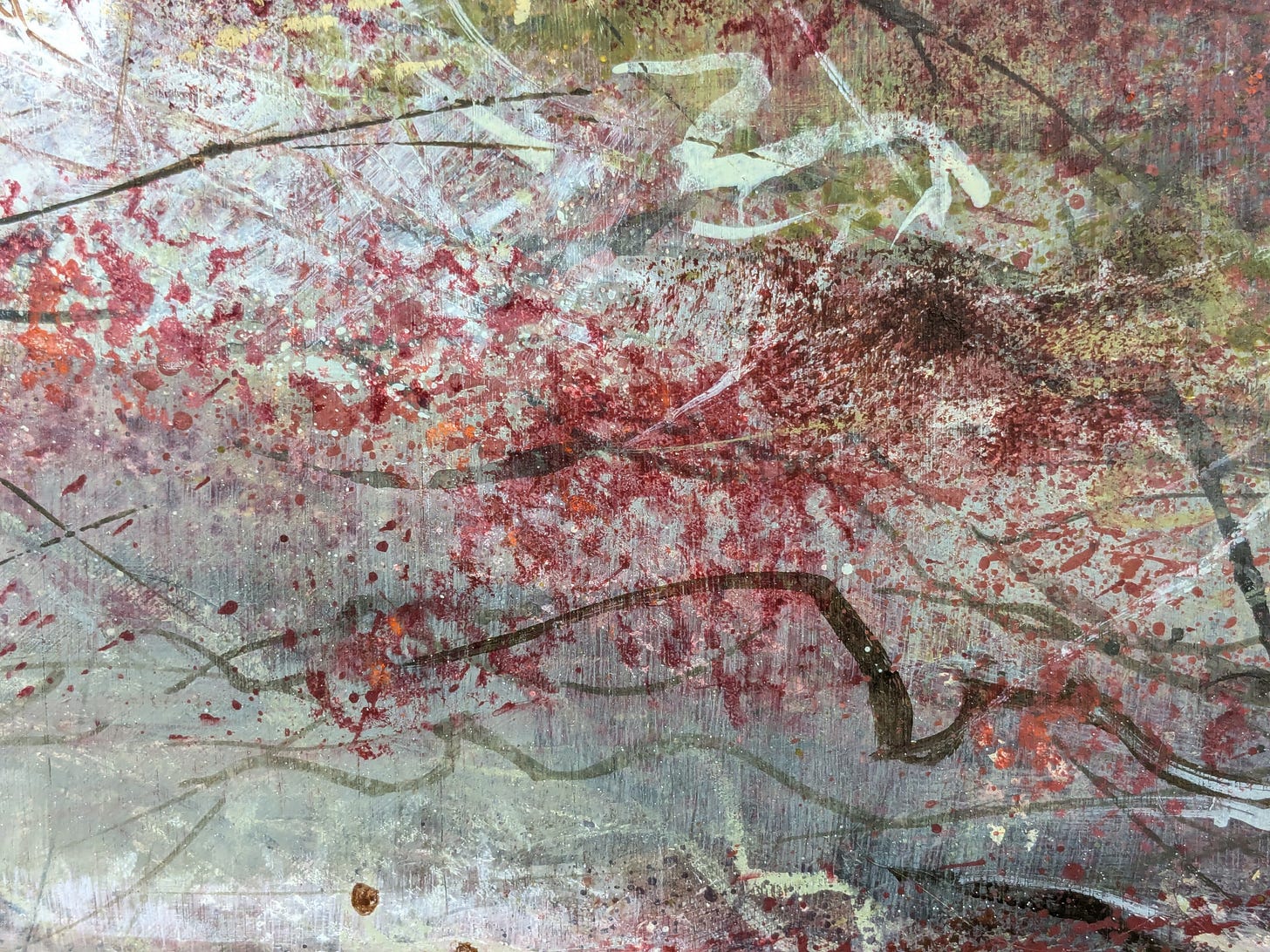
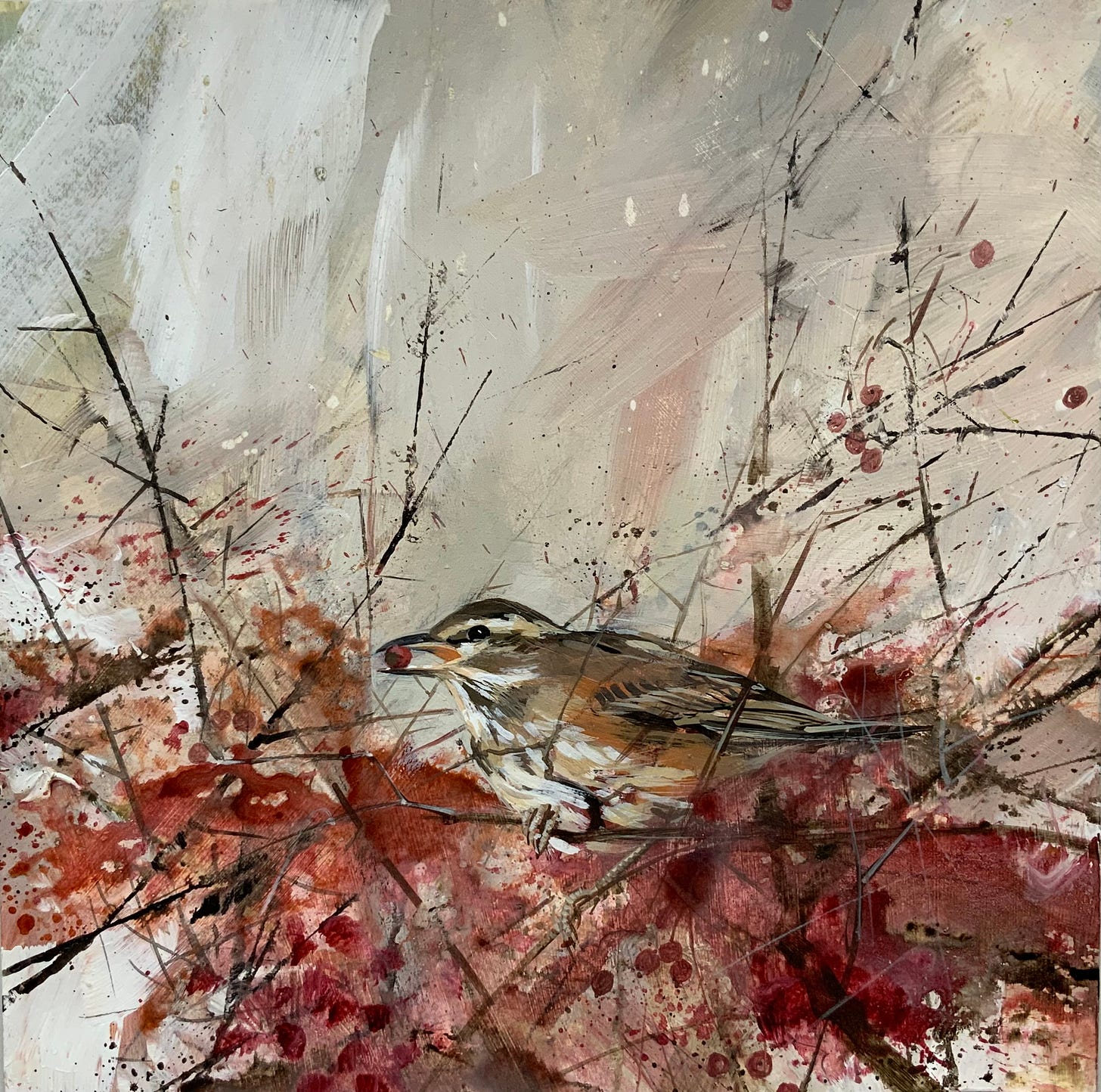

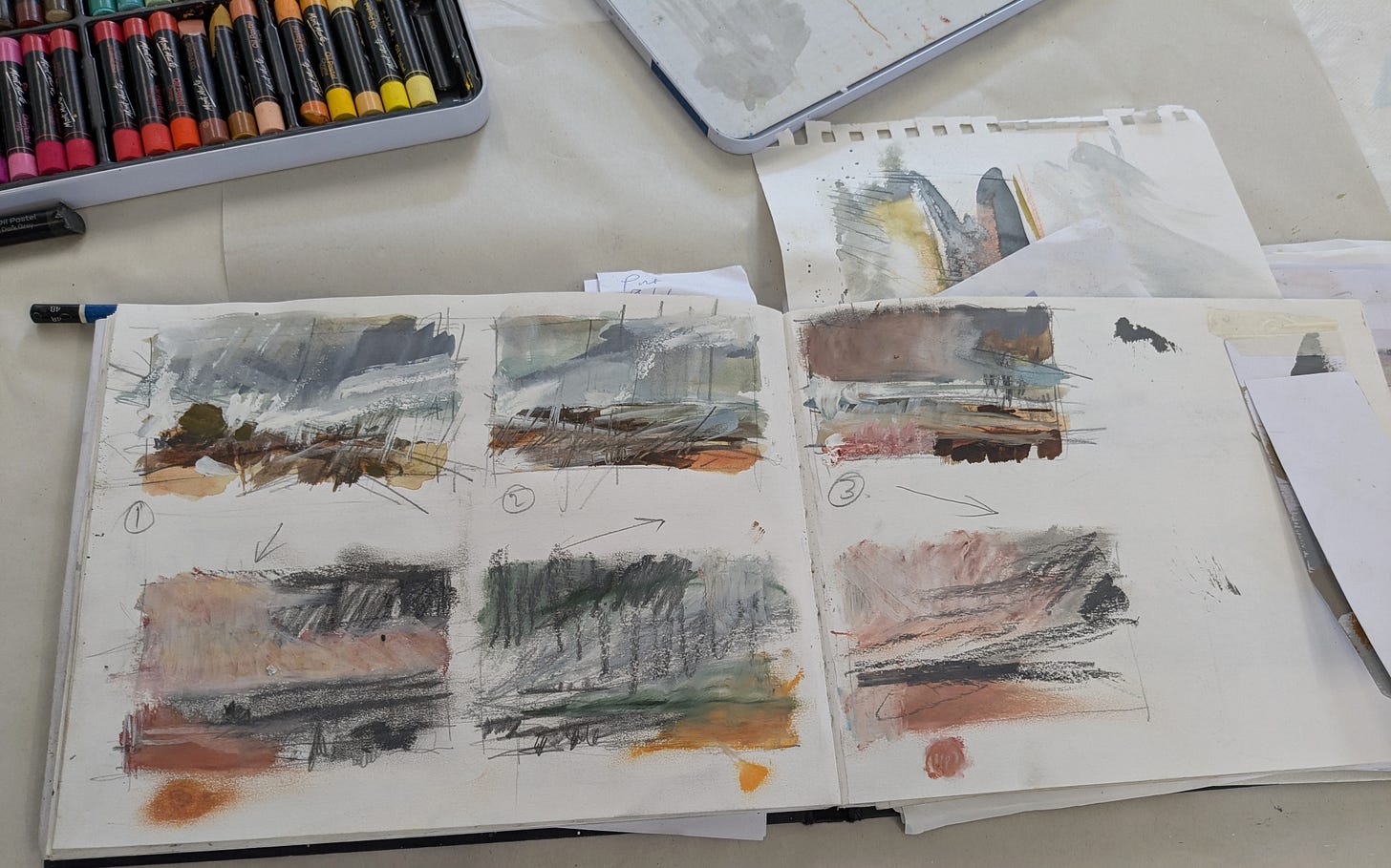

Wow Deborah, was a lovely post, I am going to save this to read later, something I rarely do with newsletters. It's beautiful. Nicola x
Lovely. And great linnet photo!